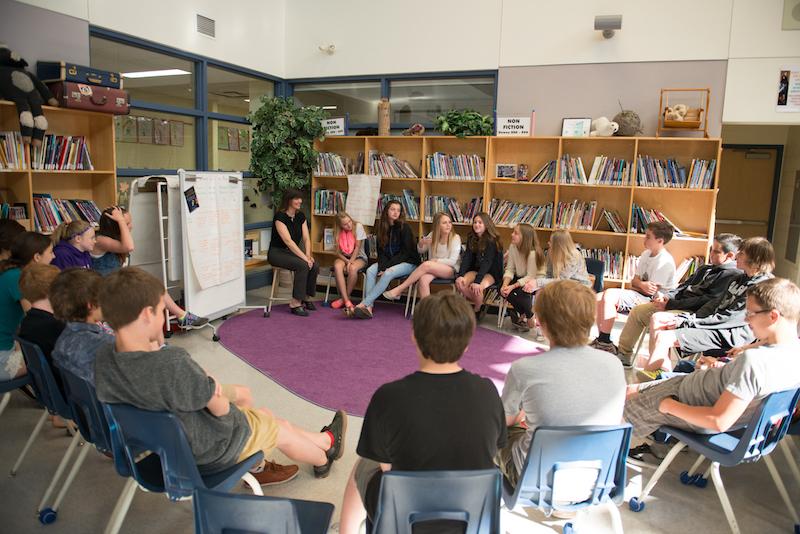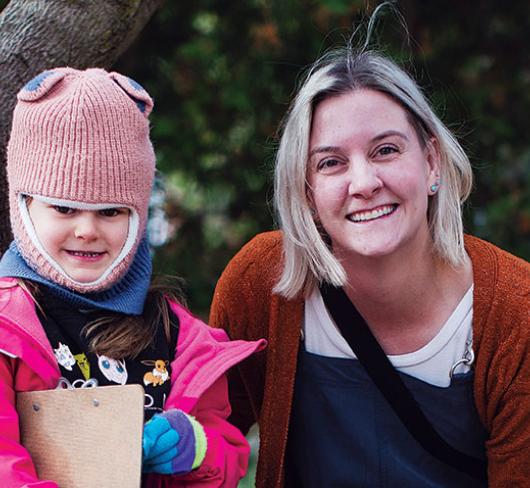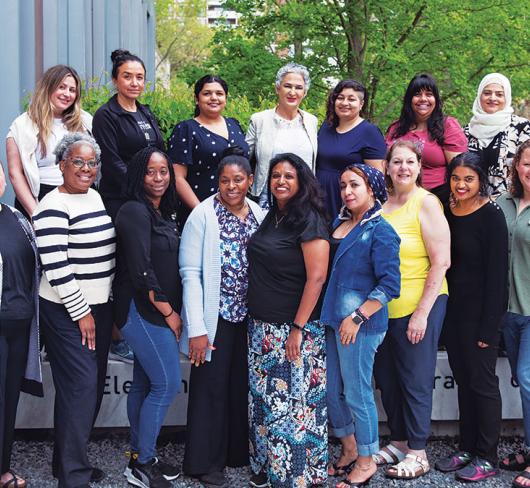
Inspire Your Students To Learn Like Astronauts
Nine-year-old Chris Hadfield was spending a typical summer at his family’s island cottage in southern Ontario when he observed an event that set his life’s direction. On July 20,1969 he watched Neil Armstrong walk on the moon. Many kids were immediately inspired, wishing to become astronauts. Chris Hadfield actually became one.
One of the members of my book club had read Hadfield’s An Astronaut’s Guide to Life on Earth, and had heard him speak in Toronto. On her recommendation we read his book. I knew it was going to be interesting, but I had no idea the impact it would have. I now realize that beyond the short, glamorous stints of being in space, astronauts are actually professional learners. Chris Hadfield’s book is a great read for teachers and students alike.
We, as teachers, have many demands placed upon us. We need not only teach the curriculum, but also make space in our day to allow our students to reflect on their learning, build skills and discover how to set and meet goals. Sharing this book with students can help achieve all of the above. It is filled with quotes and examples that give students opportunities to reflect on the key aspects of learning that took Hadfield years to develop and understand.
In my Grade 7 class we often use a writing practice called Quickwrites for exploring ideas. I was introduced to this concept by teacher and author, Linda Rief, through her books 100 Quickwrites and Read Write Teach, both of which I use extensively in my teaching. Linda explains in Read Write Teach that the premise of Quickwrites is to allow students to respond to texts, explore ideas and realize the opinions and experiences “they didn’t know they knew, or they wouldn’t have known, before committing words to paper.” Using the Quickwrites format to explore Chris Hadfield’s book is an easy way to engage all students and allow them time to absorb and connect to his ideas.
“Aim To Be A Zero” Or How To ‘Be’ So Everyone Else Can ‘Be’ Too
When we are setting the tone for the year and creating a set of class rules there are 20 to 30 factors we must take into consideration … our students. Our classes are filled with many different personalities. There are the quiet, thoughtful students you wish would add more; the ones with great ideas who advance class thinking; the ones who need time to process the question; and the ones who love to talk, even if it isn’t about the topic you’re discussing. How do we create space for all of our students to grow, demonstrate their strengths and recognize when certain behaviours aren’t helping class dynamics?
“Aim to Be a Zero” is a great chapter and philosophy to explore. Ideally I like to read this whole chapter to the class, but if time is limited, I suggest flipping to page 181 to read Chris’s quick synopsis of his philosophy of being:
“Over the years, I’ve realized that in any new situation, whether it involves an elevator or a rocket ship, you will almost certainly be viewed in one of three ways. As a minus one: actively harmful, someone who creates problems. Or as a zero: your impact is neutral and doesn’t tip the balance one way or another. Or you’ll be seen as a plus one: someone who actively adds value. Everyone wants to be a plus one, of course, but proclaiming your plus-oneness at the outset almost guarantees you’ll be perceived as a minus one, regardless of the skills you bring to the table or how you actually perform. This might seem self-evident, but it can’t be, because so many people do it.”
After reading the quote or the chapter, which is filled with examples of the three ways of being, I’d ask students to write for two or three minutes in their journals to respond to something that grabs them from the passage or as a direct response to the following questions:
- How do you see yourself and why?
- Have you ever observed how being a plus one, zero or minus one affects learning on a sports team or in the classroom?
Sharing responses is always interesting and provides insights into class dynamics and how students perceive themselves and the impact of various behaviours.
As a follow-up activity, I like to provide a chart with various activities that take place in my class (e.g., class discussions, group work, independent reading, independent work) listed across the top and the levels listed along the side. Groups are then provided with an assigned activity and they brainstorm actions that fit into the different categories.
This becomes an anchor chart for students to experiment with actions and work towards achieving personal goals. It also allows students to see the impact of their choices and make choices to achieve their desired level. This could lead to an exploration of self-regulation, goal setting and the other learning skills we write about on report cards.
Do we want our students to aim to be a zero? Ideally not. We want each of them to be able to take on plus one roles at certain times, be a zero at other times and identify minus one behaviours that are “actively harmful” for their learning or for the learning of others.
“The Last People In The World” Or Sometimes You Just Have To Buckle Down
The success of everyone is an extremely important concept when there are only three of you on a space mission and a mistake can mean death for the whole crew. In that sort of situation each person must be well trained and supported. Chris Hadfield tells us about the time he “messed up a Soyuz docking practical exam.” His crewmate not only commiserated with him to make him feel better, “but suggested techniques and tactics [he] could use to improve [his] performance and then rejoiced . . . when [he] retook the exam and passed.” How does this apply to our classrooms? It supports the idea that everyone has different strengths and weaknesses and that even an astronaut can fail a test. Does that mean students are bad at certain skills and will never achieve them? No, it means they have to work harder, find a different strategy and try again.
We aim for this. We want our students to recognize their strengths, but we also need them to see that their weaknesses are simply areas for growth. Just because a skill is difficult doesn’t mean a student can’t eventually become proficient in that area. For example, if people fail their driver’s test the first time, does it mean they will never drive? We want our students to recognize that some parts of learning may be difficult, but with work and determination they can certainly succeed.
Sometimes the students who pick up concepts easily are the ones who have trouble when they find a skill that is difficult. Our students who have always worked hard to learn may have the skills and knowledge their peers need. A perfect quote from Hadfield’s book to use as a Quickwrite is on page 100: “Early success is a terrible teacher. You’re essentially being rewarded for a lack of preparation, so when you find yourself in a situation where you must prepare, you can’t do it. You don’t know how.”
There are a couple of different follow-up activities that work well after reading this quote. Students could make a chart with the titles “Easy” and “Challenging” and take two or three minutes to list any activities that are either easy or challenging for them. Students could also describe a time when something was difficult and they had to work to achieve it.
Sharing strengths, weaknesses and ways our students have achieved success in the past provides students with insights into ways others have overcome difficulties or how their own work ethic in different areas of their lives can apply to their work in school. Failing doesn’t have to be the end of learning.
“Sweat The Small Stuff” Or Permission To Fail
Mistakes can have a large impact on astronauts because the machinery they work with provides the environment they need to live. Understanding the mistakes that could take place on a mission is an important aspect of space training. Every action that will take place during the mission is simulated and analyzed in detail, so that a procedure can be created to approach each potential problem. Chris Hadfield explains that NASA calls these procedures Flight Rules and astronauts are expected to respond positively to criticism and draw attention to missteps and miscalculations.”
By sharing this aspect of space training, I hope to give my students permission to fail. I want them to know that failure is part of learning and that by sharing their failures they can help others in our class succeed. The math teachers in my school often create study guides in their classes to give the students a reference for their learning. Wouldn’t it be great if they added flight rules for each unit, so students and teachers could analyze common mistakes and learn how to avoid them?
To raise understanding about this learning process, you may wish to read a number of sections from the chapter “Sweat The Small Stuff” or you could share the quote found on page 81: “And as in any debrief, everyone also wanted to review what we could have done better – and to magnify and advertise our errors, so other astronauts wouldn’t make the same ones.”
In response to this quote, students could write about a time they made a mistake or were embarrassed and what they learned from it, or they could write about a time they saw someone else make a mistake and describe what it taught them. I certainly have a number of stories on that topic that I can share with my class from my writer’s journal and so does Chris Hadfield. We need to have this discussion with our students so they see that mistakes or potential failures are not the end of the world, but a beginning where they can start to develop deeper understandings of the topics or skills they are exploring.
When interviewing Hadfield for space.com, Robert Pearlman asked what the purpose of writing An Astronaut’s Guide to Life on Earth was and why it was described as a guide rather than an autobiography. Hadfield stated, “What happened to me is interesting to me, but what really matters is what does it mean to someone else.” If this was his purpose, he has succeeded.
An Astronaut’s Guide to Life on Earth has topped the book charts in the areas of business, self-help and consulting, but it is also beneficial to developing key understandings for students and teachers in the area of education. How do we work with others? What steps do we take when we’re faced with difficulties? How do we react to failure and rise above it? How can we achieve our goals? Another successful mission, Commander Hadfield!
Stefanie Cole is a member of the Durham Teacher Local. Activity masters for this article can be found at http://bit.ly/1KZwZxH.

